Rome’s beer boom part of fastest growing beer nation in the world: Italy
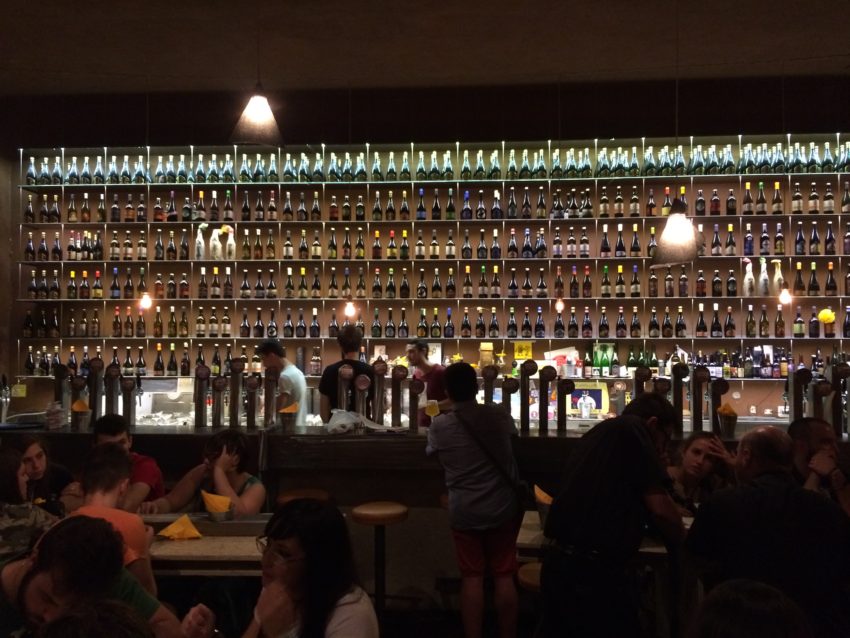
During my 40 years in journalism covering sports, food and travel, I’ve had some amazing assignments, jobs that sound more like dream vacations: six Olympics, Texas barbecue, exotic adventures ranging from shark diving in French Polynesia to trekking in Nepal. But last summer, I may have topped them all in terms of comfort and, well, good taste.
Rome’s beer boom.
In July. Think about it. What better way to earn beer money than to travel around Rome during its hottest month and research beer? I wrote it for BeerAdvocate (http://www.beeradvocate.com/community/threads/beeradvocate-magazine-94-november-2014.223666/), a terrific beer magazine out of Massachusetts. This past weekend I decided to revisit all the places I wrote about last summer. It just so happens it came during one of Rome’s longest heat waves in recent memory.
Beer in Rome? Yes, there is some. There’s a lot, actually. Thanks to Agostino Arioli and Teo Musso, two Northern Italians tired of Italy’s backwater beer scene, beer bars in Rome have exploded. Eight years ago, Italy had only 70 craft breweries. Today it has 650. Rome has more than three dozen craft beer bars, known as birrerias, and just as many “bottle shops” selling nothing but bottled beer.
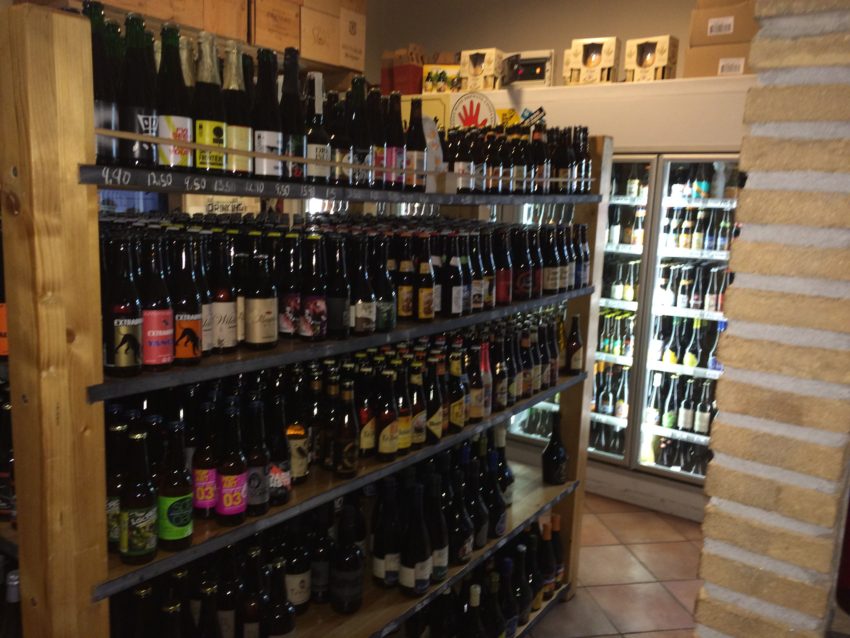
“Nowadays, after the U.S., I think the most interesting, exciting craft beer scene is Italy,” said Arioli, who founded Birrificio Italiano, one of the top craft beer breweries in the country, in 1996.
Italy desperately needed it. If you’ve ever been to an American beer bar selling beers from around the world, you’ve seen the word “Peroni” under “Italy.” American pubs sell it for the larcenous price of $6.50 because, hey, it’s from Italy. It must be good. Peroni is the Budweiser of Italy. It is mass produced, gutless and tasteless. But it is cold and it is cheap. If you ever see a man passed out on a sidewalk in Rome, there is inevitably an empty liter bottle of Peroni next to him. Thus, I have christened Peroni “La birra del senza tetto” (The beer of the homeless.)
This may be one reason Italy had in 2011, according to Breweries of Europe, Europe’s lowest beer consumption per capita at 29 liters per year. My fraternity drank that much. Czech Republic was No. 1 at 145.
Italy remained, pardon the expression, an untapped market. Here’s why: Italians love fine taste. Look at their food, their wine. They’re into quality, not quantity. You rarely see Italian college kids getting a case of Peroni and drinking it in one night. The Italian beer pioneers figured if you improve the taste of Italian beer, Italians would drink more beer.

“We started from zero,” said Manuele Calonna, considered the godfather of Rome’s craft beer explosion as his Ma Che Siete Venuti A Fa was the first in Rome to sell Italian craft beer in 2001. “There was no culture. Just Peroni and it’s easy to win against Peroni.”
Consequently, more Italians are talking to bartenders about the makeup of the beer, the ingredients. Why does it taste so good, so smooth, so strong? It’s like Italians going to wineries. They ask the same types of questions. The answers can be fascinating. What separates Italian craft beer from the rest of the world is many include special ingredients found only in the area of the brewery. Thus, Italian beers have such flavors as honey, Sambuca, licorice, ginseng, tobacco and oyster. Even Barbera grapes find their way into beers in Veneto, the northeast Italian region where the wine is produced.
The styles, however, traverse the globe. Italian breweries are making IPAs, Pilsners, Belgian ales, American-style lagers. And the alcohol content makes Peroni’s 4.7 percent taste like Gatorade. Some are as high as 12 percent.
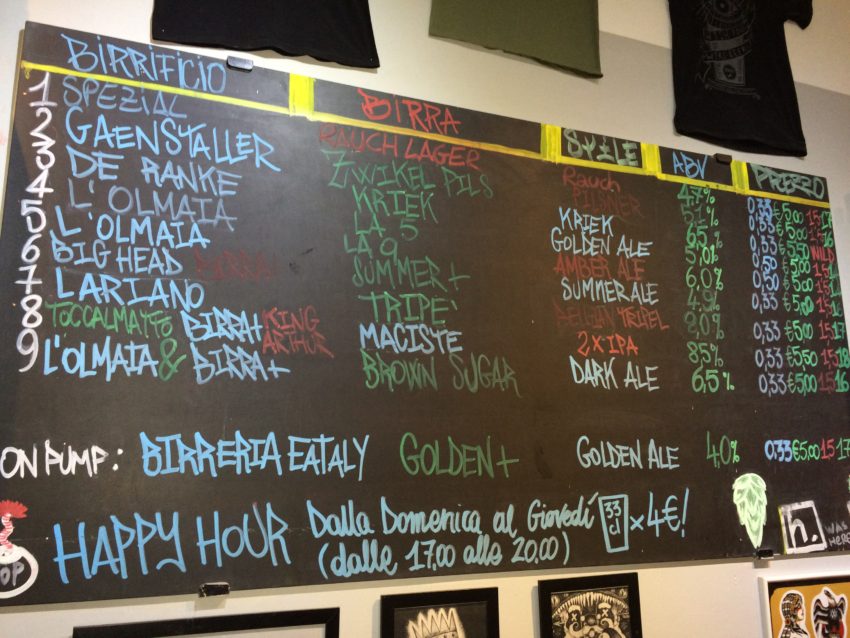
“Italians drink strong beer,” said Johnny Nolan, whose Johnny’s Off-License became Rome’s first bottle shop when it opened in 2004. “A lot of clients, especially the Romans, come and drink heavy duty Belgian ales, double IPAs, anything over 7 percent. It’s very difficult to sell beers here that are lower.”
Of course, the explosion sometimes backfires. When you have 650 craft breweries, a lot will taste like they were brewed in the trunk of someone’s Fiat. Italy had no beer culture. In Germany you need a degree to brew beer. In Italy you need a pulse.
“They think it’s easy money and they know nothing about brewing,” said Alex Liberati, whose Brasserie 4:20 may be the classiest birreria in Rome. “A guy has a bar for 20 years. He’s been serving Super Tennent’s and Guinness for 20 years. All of a sudden, a rep of a brewery manufacture says, ‘Dude, you’ve been selling beer for 20 years. How much beer have you sold?’ The guy tells him the number. He says, ‘You know, if you bought a brewery 20 years ago, our brewery that we sell, and you brewed beer for yourself, you’d be this million euros richer.’ The bar owner says, ‘Well, OK. That makes a lot of sense.
“‘But the only problem is I know nothing about brewing, dude.’”
Last summer I learned a lot. I drank a lot. I wanted to do it again. I wanted a real authentic Rome beer crawl worthy of any pub-clogged downtown in the U.S. I thought about revisiting all 10 birrerias in one night. But then, I haven’t had 10 pints of beer in one night since college. I don’t think crowded subways take too kindly to projectile vomiting. Instead, I split it into two nights and two blogs. The second blog will appear soon. So have a seat. Come with me on a beer tour of Rome. By the end, I’ll bet you’ll be thirsty. (Neighborhoods are in parentheses.)
NIGHT ONE
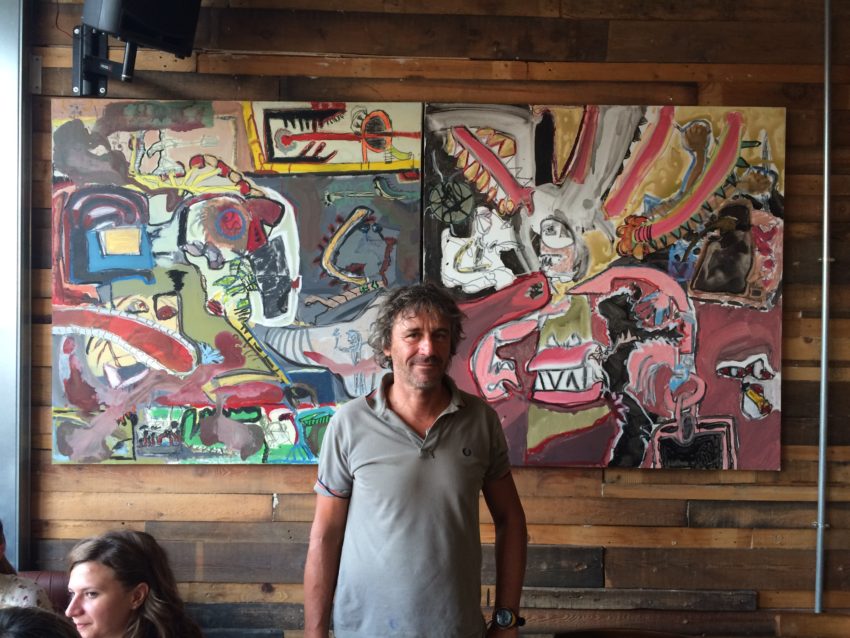
HOPSIDE
Via Francesco Negri, 39 (Ostiense)
Hopside.it
Ostiense is just north of my Testaccio neighborhood and is marked by one of the ugliest ruins in Europe. This Roman ruin isn’t 2,000 years old. It’s 10. An abandoned public market, covering the equivalent of about three city blocks, lays waste with crumbling concrete walls, blown-out windows and rubble. It looks like the movie set of a post-apocalyptic horror film where daily life means survival and desperation. Across the street from this monstrosity is Hopside, offering an upbeat futuristic look in contrast to the market’s ruined past.
It’s one of the newest birrerias in Rome, only a year old when I visited last summer. They don’t have the volume of beers as its older brethren but it has one of the best I’ve ever had. Vudu is a Dunkelweizen made by Arioli’s Birrificio Italiano with 6 percent alcohol and a strong, smooth taste. I remember getting a tour of its basement where I saw a vast network of brewing equipment. People from around the neighborhood can come in and make their own beer.

One of their primary markets is nearby Roma Tre University. The abandoned market will never be a market. It’s too expensive and too big to become a mall.
I asked the bartender about the wild art pieces. They looked like animals and human skulls that had melted on canvas. He pointed to the artist who happened to be having a beer. Corrado Sassi, 50, is a shaggy-haired photographer who sells to galleries in Naples and London and dabbles in painting. I asked him what inspires him.
“Rage and emotions,” he said. Funny, that’s what inspired Rome’s beer boom.
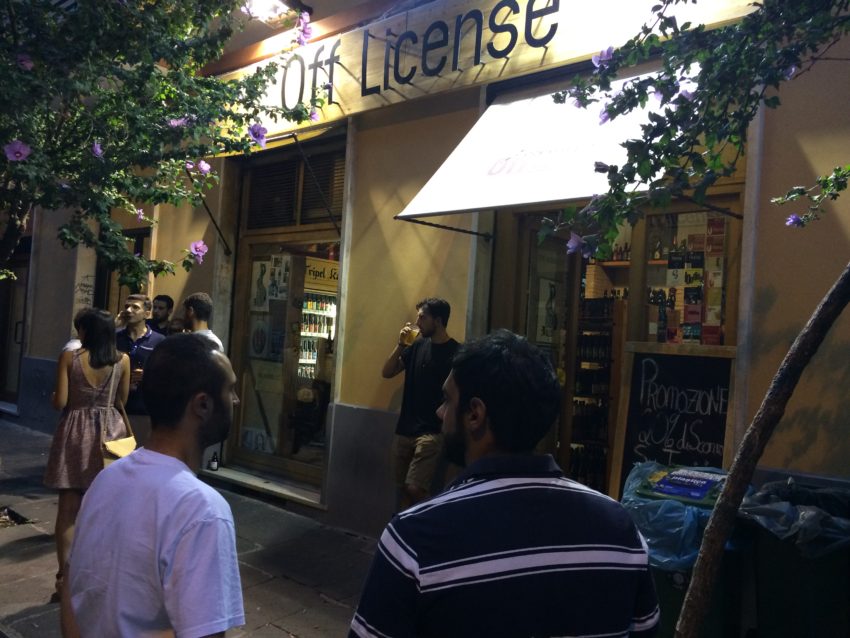
JOHNNY’S OFF LICENSE
Via Veio, 4 (San Giovanni)
Offlicense.it
Nolan came from Dublin so he knows a little about beer. He also knew when he first lived here in the late ‘90s that he got tired of having to go to a bar to buy beer after 8 p.m. when the supermarkets closed. Why doesn’t Rome have a place to buy good beer and take it home? So he opened Johnny’s Off License in the shadow of Basilica San Giovanni in Laterano, a 1,000-year-old cathedral that takes rightful claim as the true cathedral of Rome, not St. Peter’s.
The name Off License comes from not having a license to serve beer inside the small shop. Instead, I noticed it a block away when I saw the perpetual crowd standing outside on the quiet side street drinking bottled beer out of plastic cups.
Johnny’s has some of the weirdest beers in Europe. My favorite may be one from Denmark with the too-long but oh, so descriptive name “Fuck Art. This is Religion.” I asked his Irish assistant for their current leading seller and he gave me a bottle of Ritual Pils, a classic pilsner of relatively modest 4.9 percent alcohol but rich in flavor with no aftertaste. Ah, what the hell. In 83-degree heat, any cold beer tastes good.
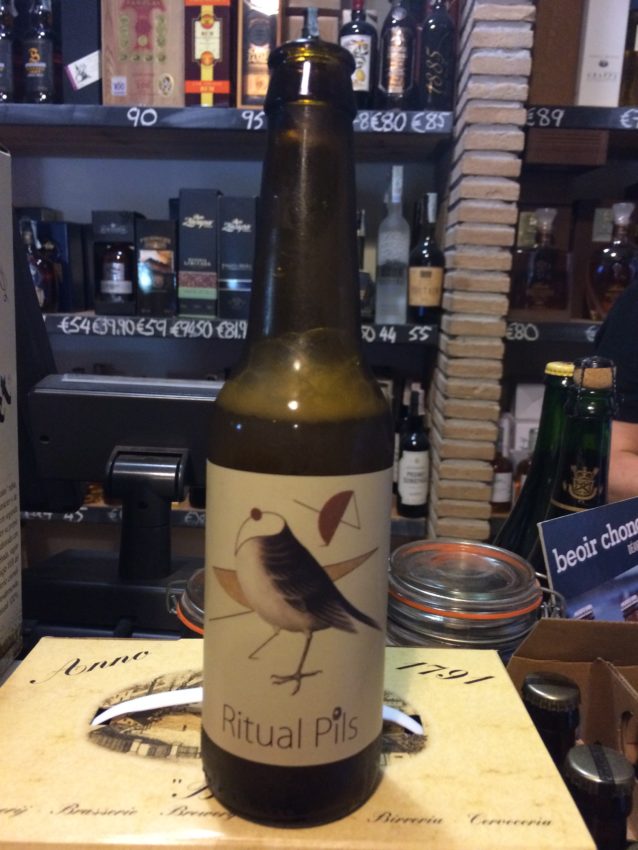
And, of course, it always tastes better outside.
“In Rome, people live on the streets,” Nolan told me. “They don’t like going into places, especially in the summer. They like being outside in the squares and talk. This is part of the culture here. I didn’t understand it until it actually happened.”
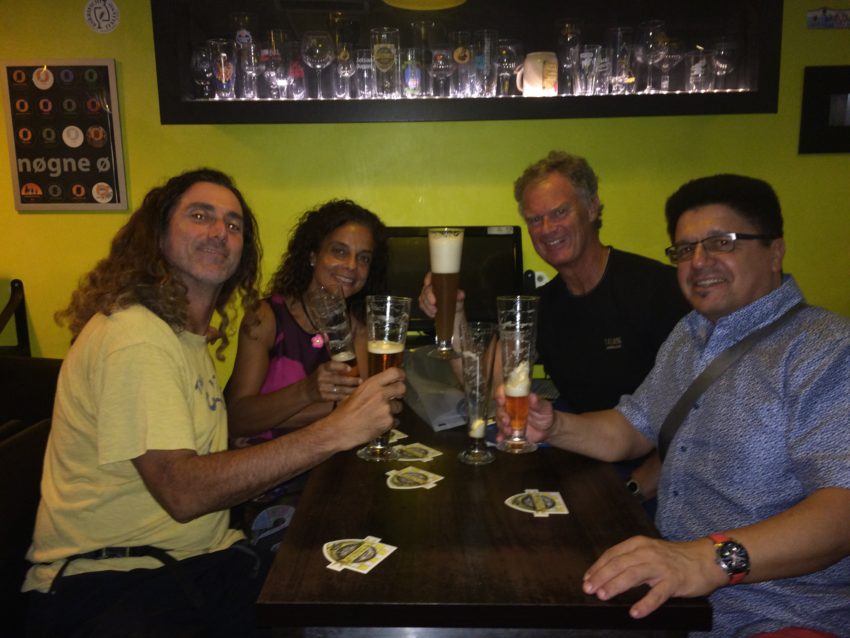
LUPPOLO 12
Via del Marrucini, 12 (San Lorenzo)
Luppolo12.it
As I was walking in, my friend Tom Leitner and his wife, Ilaria, were walking out. Tom is a Bay Area native whose wild long hair and happy, laid-back persona make him look as if he was born with a Frisbee in his hand. Maybe he was. He’s a seven-time world freestyle champion. But he’s also a craft beer exper and is why he comes to Luppolo 12.
If you’re going to open a beer bar, what better location than near the largest university in Europe? Roma Sapienza Universita’ has more than 100,000 students, nearly all living in the San Lorenzo neighborhood just southeast of the Termini train station. Luppolo (Italian for “hops”) has 150 different bottled beers, about half Italian, with 16 taps. They didn’t have my favorite Saison Wild Lady but Leitner and Ilaria had been drinking Drago Verde. They joined me for another. Then another.
Of course, in a university area, you need bar food. Luppolo 12 has foccacce, a gooey, cheesy snack on thick focaccia bread. Mine was split into four parts covered in prosciutto, salami, a spreadable salami called ciauscolo and nduja, a salami from Puglia (heel of Italy’s boot) so spicy you need four Drago Verdes to get through one slice.
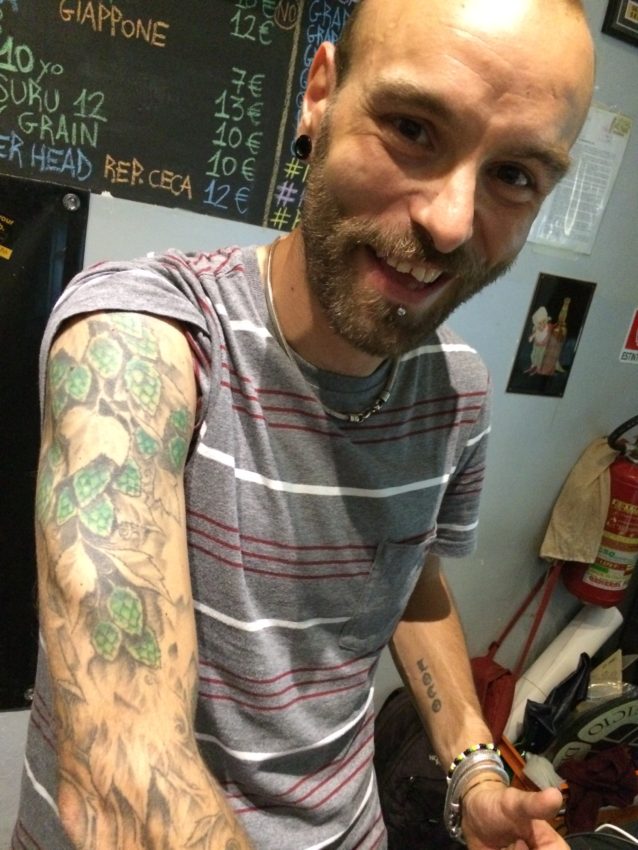
BIRRA PIU
Via del Pigneto, 105 (Pigneto)
Birrapiu.it
Pigneto is Rome’s drug center. If you want anything from a joint to a pop of heroin, you come to Pigneto. It’s southeast of San Lorenzo, bordering railroad tracks. Walk through it and it doesn’t remind you of any American ghetto. The apartments are decent. Jazz clubs, bars and restaurants line the main pedestrian drag of Via Pigneto. But locals have told me that after midnight the pushers come out and so do some addicts, a few VERY desperate.
When I interviewed the owner, Valerio Munzi, about it last summer, I had to ask him. What’s the most dangerous area of Pigneto?
“This street,” he said, waving his hand up Via Pigneto, a relatively bustling street closed off to traffic. “It’s the best street, but it’s also the most violent. There are no problems with you or me. The problem is between drug dealers and all the people who are drunk. You see rumbles. But in this place in five years I’ve seen one rumble.”
Twenty years ago, he said, Pigneto was like South-Central Los Angeles. However, artists moved in and gentrified the place. He opened Birra Piu as one of Rome’s first bottle shops six years ago and today sports 1,500 different brands. One is called Superanale. I don’t know who the marketing genius was but the label of a man with his finger up his arse didn’t make me any more thirsty.
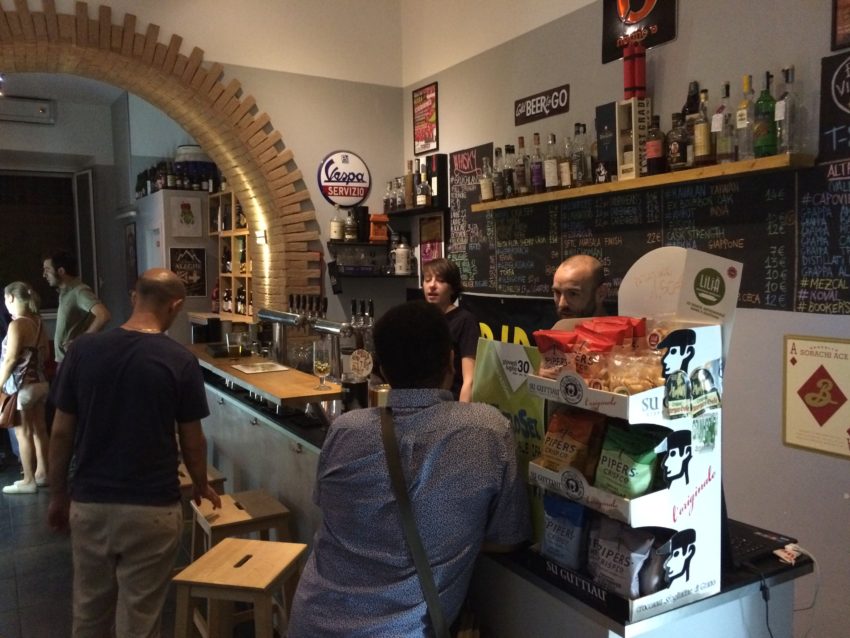
This trip, I had a Summer Plus, a hoppy IPA with 4.8-percent alcohol they get from Eataly, the Italian-based food emporium chain that also has a brewery. Serving me was Massimiliano Vichi, who wears his dedication on his wrist. And forearm. And bicep. His whole arm is covered in tattoos of hops.
“We want to make beer fun to drink,” he said.
I left after the witching midnight hour. Via Pigneto was packed with partiers. But as I turned a corner to return to the bus stop, a West African immigrant whispered to me, “Prostituta?”
“Non pago per niente,” (I pay for nothing.) I said. Except good beer.
OPEN BALADIN
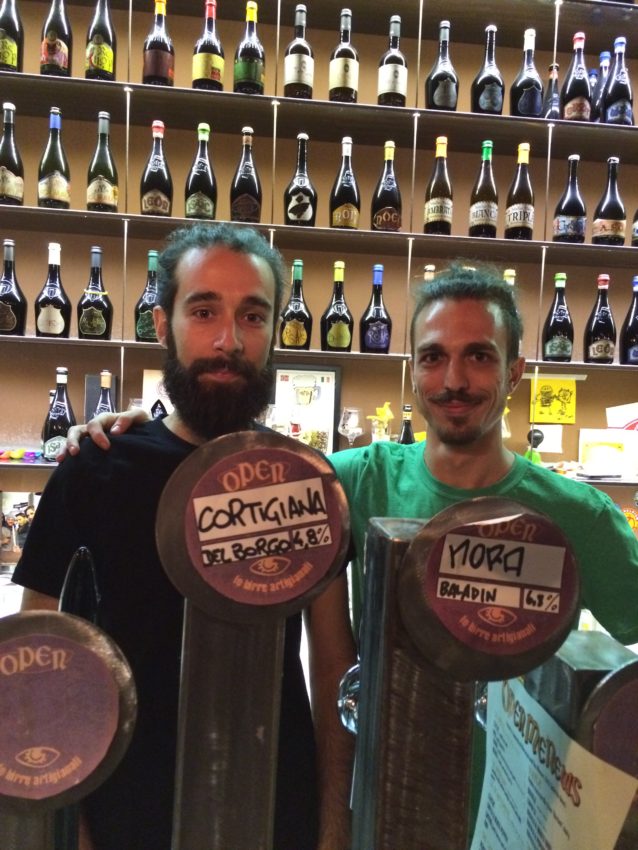
Via degli Specchi, 6 (Centro Storico)
Openbaladinroma.it
Just down the street from this classy, sprawling bar is Campo dei Fiori. Rome’s party piazza is ringed with bars featuring cheap beer, cheap North American students and cheap Italian men waiting patiently for said female students to get too hammered to walk home. (“Would you like to see the Leaning Tower of Pietro?”)
Open Baladin offers an alternative to the beer gourmet. The bar back lights floor to ceiling beer bottles, giving it more of a museum feel than a bar. About 90 of the bottles come from Italy and 40 are on tap. It’s almost always packed, about 75 percent local. On this night, it was only half full which is why I noticed the two priests sitting behind me. Yes, maybe they were thanking God for bringing good beer to Italy.
As good as the beer is — try the Isaac, Baladin’s popular spiced Wibier — the food is even better. One obvious junk food junkie studying abroad from the U.S. once looked up from his plate and told me this was the best hamburger he’d ever had. The chef, Gabriele Bonci, is famous around Rome for his pizza dough. He uses the same recipe in the homemade buns. I had l’Intoccabile, made from Sicilian bread with salsa, ricotta, almonds and olives.
I walked out of the dark bar at midnight remarkably sober. Seven beers over six hours doesn’t take much effect, especially when you spend half the time waiting at bus stops in Rome’s bus system that hasn’t really changed since the Middle Ages.
I wasn’t drunk, but I also wasn’t thirsty. Welcome to Italy, folks. The world’s newest beer nation.


August 26, 2015 @ 7:30 am
Dear John,
I really appreciated the articles on beer pubs in Rome.
I am quite fond of artisanal beers and I also tried to brew a bit with a friend with sufficient results for a beginner.
However what I liked most, apart from the list of places some of which I did not know, is that you at last say that peroni is just an industrial beer with scarcity of taste, nothing compared to artisanal beers, Italian or foreign.
Thank you and hope to meet you next time you are in rome.
By the way, the nduja is not from Puglia but from calabria.
Best regards and thanks again for your love for Italy
Marco